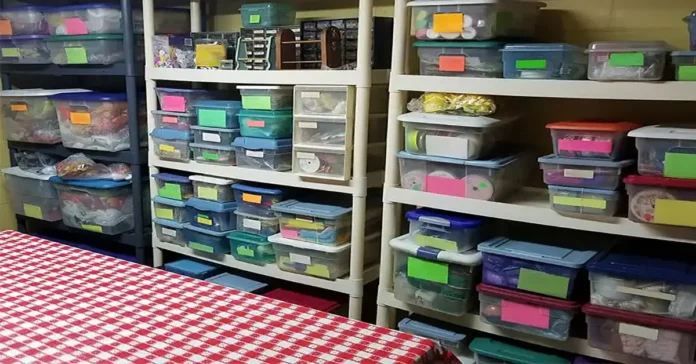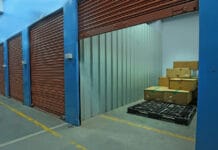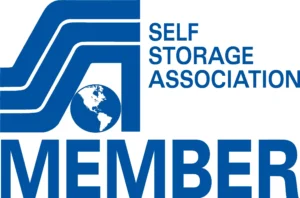Maintaining an organized living space is necessary for a stress-free lifestyle. Effective labelling plays a pivotal role in achieving this, whether you’re organizing your home or managing storage spaces during renovation or decluttering projects. By utilizing smart labeling techniques and incorporating innovative label maker ideas, you can streamline your organization process and create a more efficient environment.
One of the first steps in effective labelling is investing in quality storage boxes. These boxes not only provide a designated space for your belongings but also serve as a canvas for your labeling endeavors.
Use keywords that resonate with your organization system, such as “seasonal clothing,” “holiday decorations,” or “electronics accessories.” This not only helps you locate items effortlessly but also aids in maintaining a clutter-free storage area. By mastering the art of effective labelling, you can transform your home and storage spaces into streamlined, clutter-free zones that support a more organized and efficient lifestyle.
Effective Labelling and Its Types
Effective labelling is a cornerstone of efficient organization, encompassing various types tailored to different needs. One type is descriptive labeling, where labels provide detailed information about the contents, such as “winter clothes” or “kitchen appliances.” This type aids in quick identification and retrieval. Categorical labeling groups items by type or purpose, like “office supplies” or “craft materials,” enhancing overall organization.
Spatial labeling designates storage locations, such as “top shelf” or “under bed,” optimizing space usage. Chronological labeling, useful for time-sensitive items like documents or perishables, indicates when items were stored or should be accessed. Combination labeling integrates these types, offering comprehensive organization solutions for home and storage spaces.
Let us show you five main types of labels that can help organize your possessions. Each type serves a slightly different purpose and helps you stay organized.
1. Chalkboard Labels for Temporary Labelling
Chalkboard labels make great temporary markers. They can easily be changed out, making them perfect for when you need something temporary. Using chalkboard paint you can create the surface of the sticker on which you write out the label or instructions. You can change this, as necessary. Or you could use chalkboard stickers because they are easier to apply and can be removed altogether if needed (Remember chalkboard paint is permanent.)
Chalkboard labels are perfect for kitchen items. These labels stick to anything, making them great for labeling small containers. You can also get chalkboard stickers that are super cute and fun to decorate your house with. If you prefer something smaller, there are chalkboard magnets. Chalkboard labels are also great for organizing and keeping track of all those random items lying around. You could put up a large chalkboard label in your storage unit to help keep track of items in there, items taken out, or write a note on anything that you need to remember on your next visit.
2. Make and Print Labels to mark Exactly What You Need
You could make your own labels by printing them out directly on adhesive paper. You could even take printouts on regular A4 sheets and then stick them onto required surfaces using double-sided tape. Either way, you will need to cut out the label as per your requirement from the bigger sheet. The advantage here is that you can design the shape of the label however you want – unleashing your creativity. For example, the label indicating a box of books can be in the shape of a book if you design it that way. You will first need to find a template online, then you can design your own image or text using any image editing software. Once you have designed the label, print it out onto paper, cut it out, and stick it on the box!
You could also laminate the labels for better durability as well as for a more professional finish. This would entail either owning a laminating machine or stepping out to get it done at the relevant store.
Steps to laminate the labels at home
- Place them in a plastic sleeve first,
- Then place the sleeves in the laminating machine and press the button to get the process started.
- To make sure the label does not move within the plastic sleeves you could use adhesive tape at the back of the label to hold it in place within the sleeve.
However, lamination is not a particularly key step in labelling. You could just paste a layer of transparent cellophane tape over the label for a glossy effect.
You could further save time by using a store-bought label maker. Using white card stock is an innovative idea because it looks nice and sturdy and because it shows up well on the label maker.
3. Bookplate Labels to Organize Baskets and Bins
Bookplate style labels add a nice touch to any object or box that they are affixed to. You can use them to label boxes, bins, baskets, and drawers, with additional information about the contents.
4. Label Maker to Organize Binders and Small Items
Using a label maker means that you can easily create labels for all sorts of different items. From making labels for your planner and grocery list to labelling the kitchen cabinets – you can create labels for everything! Label makers available in the market let you customize the size of the label. If you are making labels for something small, like a tab on a binder, you will need a smaller label. If you are making labels for a larger item, like a cabinet door, you will need a bigger label.
Labels are great for labelling smaller items, especially if you have lots of them. You can even create custom labels using templates. However, once you start getting into bigger items, you may need something a bit more permanent. For example, you could use a wood stain to permanently mark a shelf or cabinet. Or you could use spray paint to mark an item that will come off easily.
5. Silhouette and Adhesive Vinyl Labels
Stickers are great for labelling items in storage, organizing your closet, decorating your desk, and even making custom gifts. You can also use stickers to personalize your phone, laptop, tablet, and more. Stickers are easy to apply and remove. You could even use distinct colours of stickers for different purposes. For example, red stickers to alert one about glassware, blue ones for stationery, green ones for perishables or products that come with an expiry date, etc.
Another type of adhesive label is the humble post-it note. You can stick them on a container and write a description of what is inside it. These can be used as temporary labels that can be discarded once their purpose has been served.
Why And Where to Use Labels
Labels can be helpful for organizing your home as well as the things you put away in storage. You can label items like books, clothes, shoes, drawers, etc. Labelling helps you find things easily. For example, if you need an old pair of jeans, you can just grab them out of the box labelled “jeans”. If you are looking for something specific, you can also search for it using the label.
While putting things in storage or moving house, be sure to label every box with a number, a gist of its contents and to which room in the new house it needs to go – this saves enormous time during unpacking.
Labelling is especially useful when it comes to organizing your self-storage unit. In a bid to declutter your living space you can choose to rent out a storage space and put away furniture and other household goods that you rarely use. The advantage of having a self-storage unit is that your goods are in a safe place that is always accessible. Labelling the boxes in your storage unit helps you find items when you need them later. You could work out a colour coding system to indicate goods based on size, material, to whom it belongs, etc. for easier accessibility.
Labelling Around the house
- Toys: To teach your kids how to clean up their toys, create a simple system that includes a few bins and a few labels. Label the bins with words like “games,” “art supplies,” “costumes,” etc. Then, place all the toys in the appropriate bins. You can also add pictures or colours to the labels if you want.
- Spices: If you cook with several spices, labels can help you keep track of what you have got. Store-bought spice jars are usually labelled, but if you are buying your spices in bulk, you may want to label or relabel your own jars.
- Books: If you are a book collector, then you will benefit from a labelling system to organize books according to genre or author. A numbering system will help ensure you do not misplace books.
- Pantry Goods: If you have a lot of dry goods stored away, you may find yourself looking for them all the time. You could fill a bag with your favourite foods, but then you must remember what you put in there. If you buy a jar of pasta sauce, you will not have to worry about remembering what you put in it. Just grab the jar and go! Use containers and baskets to keep everything organized. Label each container clearly with its contents and the date you bought it. That way, you will never forget what you have got!
- Paper Files: We recommend using an efficient app for organizing all your notes. We also recommend tagging them. You can create folders inside the app and then tag each folder with a label.
Labelling helps with keeping your things organized, drastically reducing the labour involved in finding them later, especially when you have put them away in storage. Keep all the things you have not used in months in a separate box and decide on whether the items need to be discarded or sent to storage. Since this box is bound to contain random objects, a label detailing the contents is necessary. Get organised with efficient labelling and live stress-free.
Effective Labelling – Final Words
In conclusion, effective labelling is a powerful tool for creating an organized and efficient environment in both homes and storage spaces. By using clear and descriptive labels, you can easily locate items, reduce clutter, and streamline daily tasks. Whether it’s categorizing items by type, providing detailed descriptions, or indicating storage locations, the right labeling approach can make a significant difference.
Additionally, label maker ideas can add a professional touch to your organization system, making it visually appealing and easy to understand for everyone in the household. Embracing effective labelling practices ultimately leads to a more functional and stress-free living or working space.
FAQs on Effective Labelling
A1. Effective labeling is a method of organizing items by using clear and descriptive labels to identify their contents easily.
A2. Effective labeling helps save time by locating items quickly, reduces clutter, and enhances overall organization.
A3. Labels help categorize items, prevent confusion, and improve inventory management.
A4. Use clear, legible fonts, include relevant information, and use color-coding for quick identification.
A5. Place labels where they are easily visible and accessible, such as on shelves, boxes, or containers.
A6. Label cables and cords, use waterproof labels for durability, and include purchase dates or warranty information.
A7. Use large, bold labels, include contents and date labels, and consider using QR codes for detailed information.
A8. Use clear folder labels, categorize documents by type, and include dates or reference numbers.
A9. Regularly update labels as items change or move, ensuring accuracy and efficiency.
A10. You can use label makers, adhesive labels, markers, and software for professional-looking labels.







